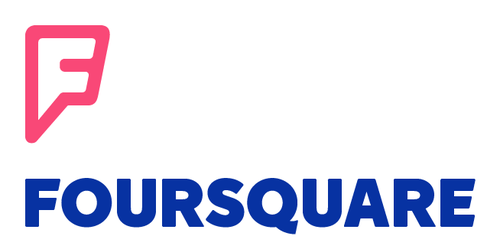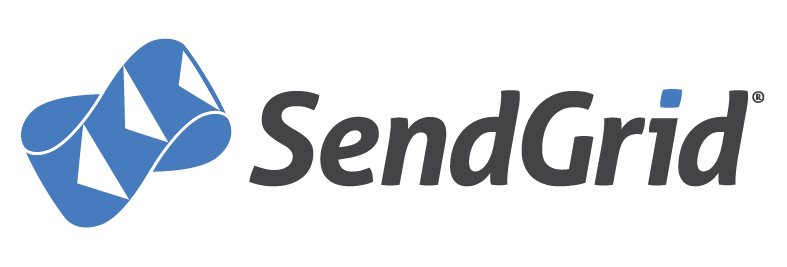My personal portfolio page, built upon sahat/hackathon-starter:
Live Demo: http://swango.xyz
A boilerplate for Node.js web applications.
- MongoDB
- Node.js
- Command Line Tools
Mac OS X: Xcode (or OS X 10.9+:
xcode-select --install)Windows: Visual Studio
Ubuntu /
Linux Mint:
sudo apt-get install build-essentialFedora:
sudo dnf groupinstall "Development Tools"OpenSUSE:
sudo zypper install --type pattern devel_basis
The easiest way to get started is to clone the repository:
# Get the latest snapshot
git clone https://github.com/Bango1999/portfolio.git myproject
# Change directory
cd myproject
# Install NPM dependencies
npm install
node app.jsTo use any of the included APIs or OAuth authentication methods, you will need to obtain appropriate credentials: Client ID, Client Secret, API Key, or Username & Password. You will need to go through each provider to generate new credentials.
Hackathon Starter 2.0 Update: I have included dummy keys and passwords for all API examples to get you up and running even faster. But don't forget to update them with your credentials when you are ready to deploy an app.
- Visit [Google Cloud Console](https://cloud.google.com/console/project) - Click on the **Create Project** button - Enter *Project Name*, then click on **Create** button - Then click on *APIs & auth* in the sidebar and select *API* tab - Click on **Google+ API** under *Social APIs*, then click **Enable API** - Next, under *APIs & auth* in the sidebar click on *Credentials* tab - Click on **Create new Client ID** button - Select *Web Application* and click on **Configure Consent Screen** - Fill out the required fields then click on **Save** - In the *Create Client ID* modal dialog: - **Application Type**: Web Application - **Authorized Javascript origins**: http://localhost:3000 - **Authorized redirect URI**: http://localhost:3000/auth/google/callback - Click on **Create Client ID** button - Copy and paste *Client ID* and *Client secret* keys into `.env`Note: When you ready to deploy to production don't forget to
add your new url to Authorized Javascript origins and Authorized redirect URI,
e.g. http://my-awesome-app.herokuapp.com and
http://my-awesome-app.herokuapp.com/auth/google/callback respectively.
The same goes for other providers.
- Visit [Facebook Developers](https://developers.facebook.com/) - Click **My Apps**, then select **Add a New App* from the dropdown menu - Select **Website** platform and enter a new name for your app - Click on the **Create New Facebook App ID** button - Choose a **Category** that best describes your app - Click on **Create App ID** button - In the upper right corner click on **Skip Quick Star** - Copy and paste *App ID* and *App Secret* keys into `.env` - **Note:** *App ID* is **clientID**, *App Secret* is **clientSecret** - Click on the *Settings* tab in the left nav, then click on **+ Add Platform** - Select **Website** - Enter `http://localhost:3000` under *Site URL*
Note: After a successful sign in with Facebook, a user will be redirected back to home page with appended hash #_=_ in the URL. It is not a bug. See this Stack Overflow discussion for ways to handle it.
- Go to [Account Settings](https://github.com/settings/profile) - Select **Applications** from the sidebar - Then inside **Developer applications** click on **Register new application** - Enter *Application Name* and *Homepage URL* - For *Authorization Callback URL*: http://localhost:3000/auth/github/callback - Click **Register application** - Now copy and paste *Client ID* and *Client Secret* keys into `.env` file
- Sign in at [https://apps.twitter.com/](https://apps.twitter.com/) - Click **Create a new application** - Enter your application name, website and description - For **Callback URL**: http://127.0.0.1:3000/auth/twitter/callback - Go to **Settings** tab - Under *Application Type* select **Read and Write** access - Check the box **Allow this application to be used to Sign in with Twitter** - Click **Update this Twitter's applications settings** - Copy and paste *Consumer Key* and *Consumer Secret* keys into `.env` file
- Sign in at [LinkedIn Developer Network](https://developer.linkedin.com/) - From the account name dropdown menu select **API Keys** - *It may ask you to sign in once again* - Click **+ Add New Application** button - Fill out all the *required* fields - **OAuth 2.0 Redirect URLs**: http://localhost:3000/auth/linkedin/callback - **JavaScript API Domains**: http://localhost:3000 - For **Default Application Permissions** make sure at least the following is checked: - `r_basicprofile` - Finish by clicking **Add Application** button - Copy and paste *API Key* and *Secret Key* keys into `.env` file - *API Key* is your **clientID** - *Secret Key* is your **clientSecret**
- Visit the **Account** section of your Venmo profile after logging in - Click on the **Developers** tab - Then click on the [new](https://venmo.com/account/app/new) link next to **Your Applications (0)** - Fill in the required fields: *App Name* and *What Will The App Be Used For?* - For **Web Redirect URL** enter: http://localhost:3000/auth/venmo/callback - Hit **Create** button - Back on the **Developers** tab click on **view** link next to **Your Applications (1) new** - Copy and paste **ID** and **Secret** keys into `.env` file
- [Sign up](https://stripe.com/) or log into your [dashboard](https://manage.stripe.com) - Click on your profile and click on Account Settings - Then click on [API Keys](https://manage.stripe.com/account/apikeys) - Copy the **Secret Key**. and add this into `.env` file
- Visit [PayPal Developer](https://developer.paypal.com/) - Log in to your PayPal account - Click **Applications > Create App** in the navigation bar - Enter *Application Name*, then click **Create app** - Copy and paste *Client ID* and *Secret* keys into `.env` file - *App ID* is **client_id**, *App Secret* is **client_secret** - Change **host** to api.paypal.com if you want to test against production and use the live credentials
- Go to [foursquare for Developers](https://developer.foursquare.com/) - Click on **My Apps** in the top menu - Click the **Create A New App** button - Enter *App Name*, *Welcome page url*, - For **Redirect URI**: http://localhost:3000/auth/foursquare/callback - Click **Save Changes** - Copy and paste *Client ID* and *Client Secret* keys into `.env` file
- Go to http://www.tumblr.com/oauth/apps - Once signed in, click **+Register application** - Fill in all the details - For **Default Callback URL**: http://localhost:3000/auth/tumblr/callback - Click **✔Register** - Copy and paste *OAuth consumer key* and *OAuth consumer secret* keys into `.env` file
- Go to http://steamcommunity.com/dev/apikey - Sign in with your existing Steam account - Enter your *Domain Name*, then and click **Register** - Copy and paste *Key* into `.env` file
- Go to https://sendgrid.com/user/signup - Sign up and **confirm** your account via the *activation email* - Then enter your SendGrid *Username* and *Password* into `.env` file
- Go to http://www.mailgun.com - Sign up and add your *Domain Name* - From the domain overview, copy and paste the default SMTP *Login* and *Password* into `.env` file
- Go to https://test.bitgo.com/ - Sign up for an account. - Once logged into the dashboard, go to the top right selector and click 'account settings' - Under the developers tab, create your access token and copy and paste it into `.env` file
- Go to https://www.twilio.com/try-twilio - Sign up for an account. - Once logged into the dashboard, expand the link 'show api credentials' - Copy your Account Sid and Auth Token
| Package | Description |
|---|---|
| async | Utility library that provides asynchronous control flow. |
| bcrypt-nodejs | Library for hashing and salting user passwords. |
| bitgo | Multi-sig Bitcoin wallet API. |
| cheerio | Scrape web pages using jQuery-style syntax. |
| clockwork | Clockwork SMS API library. |
| connect-mongo | MongoDB session store for Express. |
| dotenv | Loads environment variables from .env file. |
| express | Node.js web framework. |
| body-parser | Express 4 middleware. |
| express-session | Express 4 middleware. |
| morgan | Express 4 middleware. |
| compression | Express 4 middleware. |
| errorhandler | Express 4 middleware. |
| serve-favicon | Express 4 middleware offering favicon serving and caching. |
| express-flash | Provides flash messages for Express. |
| express-validator | Easy form validation for Express. |
| fbgraph | Facebook Graph API library. |
| github-api | GitHub API library. |
| jade | Template engine for Express. |
| lastfm | Last.fm API library. |
| instagram-node | Instagram API library. |
| lob | Lob API library |
| lusca | CSRF middleware. |
| mongoose | MongoDB ODM. |
| node-foursquare | Foursquare API library. |
| node-linkedin | LinkedIn API library. |
| node-sass-middleware | Sass middleware compiler. |
| nodemailer | Node.js library for sending emails. |
| passport | Simple and elegant authentication library for node.js |
| passport-facebook | Sign-in with Facebook plugin. |
| passport-github | Sign-in with GitHub plugin. |
| passport-google-oauth | Sign-in with Google plugin. |
| passport-twitter | Sign-in with Twitter plugin. |
| passport-instagram | Sign-in with Instagram plugin. |
| passport-local | Sign-in with Username and Password plugin. |
| passport-linkedin-oauth2 | Sign-in with LinkedIn plugin. |
| passport-oauth | Allows you to set up your own OAuth 1.0a and OAuth 2.0 strategies. |
| paypal-rest-sdk | PayPal APIs library. |
| request | Simplified HTTP request library. |
| stripe | Offical Stripe API library. |
| tumblr.js | Tumblr API library. |
| twilio | Twilio API library. |
| twit | Twitter API library. |
| lodash | Handy JavaScript utlities library. |
| validator | Used in conjunction with express-validator in controllers/api.js. |
| mocha | Test framework. |
| chai | BDD/TDD assertion library. |
| supertest | HTTP assertion library. |
| yui | Used by the Yahoo API example. |
You need to have a MongoDB server running before launching app.js. You can
download MongoDB here, or install it via a package manager.
Windows users, read Install MongoDB on Windows.













